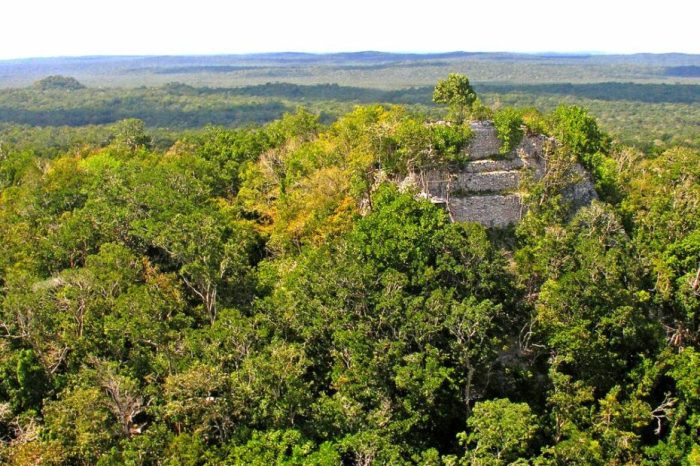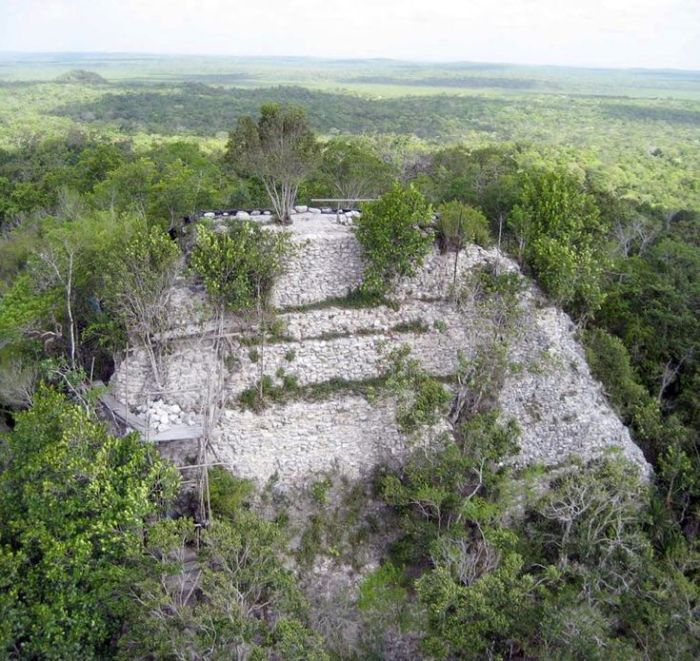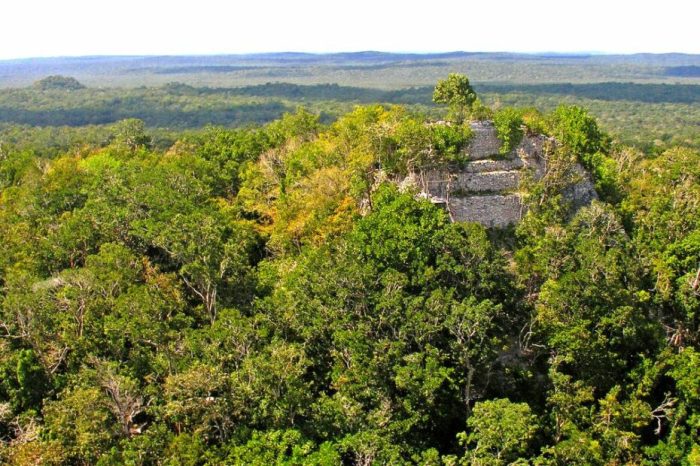Best places to visit in Guatemala: Unveiling the hidden gems and vibrant landscapes of this Central American country. From ancient Mayan ruins to lush rainforests, Guatemala offers a diverse tapestry of experiences for every traveler. This exploration dives deep into the nation’s captivating history, culture, and geography, highlighting the top destinations and activities to make the most of your Guatemalan adventure.
Guatemala’s beauty stretches from the volcanic highlands to the coastal plains, each region brimming with its own unique charm. This guide will cover the must-see destinations, along with practical tips for planning your trip, from budgeting to safety precautions.
Introduction to Guatemala
Nestled in Central America, Guatemala boasts a captivating blend of history, culture, and natural beauty. From ancient Mayan ruins to vibrant colonial cities, and from lush rainforests to volcanic landscapes, the country offers a diverse and unforgettable experience for travelers. Its rich heritage, deeply rooted in indigenous traditions and colonial influences, continues to shape the nation’s unique character.
The country’s captivating geography, encompassing a variety of ecosystems, further enhances its appeal.Guatemala’s history is intricately woven with the legacy of the Mayan civilization, who flourished for centuries before the arrival of the Spanish conquistadors. The Spanish conquest profoundly impacted the country, introducing new cultures and systems, while also leaving behind traces of its colonial past in architecture and traditions.
The country’s complex past continues to resonate in its present, creating a dynamic and engaging cultural tapestry.
Guatemala’s Diverse Landscapes
Guatemala’s geography is a testament to its natural splendor. The country’s terrain encompasses a breathtaking array of ecosystems, from the towering volcanoes of the highlands to the dense rainforests of the Petén. This geographic diversity fosters a wide range of flora and fauna, providing visitors with opportunities to encounter unique species and environments. The country’s varied landscapes, from the high-altitude peaks to the coastal plains, provide a stunning backdrop for exploring its diverse cultural heritage.
Regional Overview
Guatemala is divided into several distinct regions, each with its own unique characteristics, reflecting the country’s diverse history and geography. Understanding these regions provides a deeper appreciation for the multifaceted nature of the Guatemalan experience.
| Region Name | Brief Description | Prominent Landmark |
|---|---|---|
| Petén | Known for its lush rainforests, ancient Mayan sites, and wildlife. The region is a haven for ecotourism and adventure activities. | Tikal National Park |
| Alta Verapaz | This region features stunning mountain scenery, coffee plantations, and a rich indigenous culture. It is a popular destination for hiking and exploring the Mayan heritage. | Lake Atitlán |
| Chimaltenango | Home to vibrant markets, colonial towns, and traditional Mayan crafts. This region is renowned for its colorful textiles and local arts and crafts. | Santa Cruz La Laguna |
| Huehuetenango | A region rich in indigenous culture and tradition. It boasts diverse communities and stunning landscapes, with the impressive highlands. | Quetzaltenango |
| Guatemala City | The capital city offers a blend of colonial architecture, modern development, and bustling city life. It’s a vital hub for commerce and cultural events. | Palacio Nacional |
Popular Tourist Destinations
Guatemala boasts a diverse tapestry of landscapes and cultures, attracting travelers from around the world. From ancient Mayan ruins to vibrant colonial cities, the country offers a unique blend of history, nature, and adventure. Exploring these destinations allows visitors to delve into the rich traditions and captivating beauty of this Central American gem.
Top 5 Popular Tourist Destinations
Guatemala’s popularity stems from its diverse offerings. These five destinations stand out for their unique attractions and experiences.
- Antigua Guatemala: A UNESCO World Heritage city, Antigua is a captivating destination nestled in the heart of volcanic landscapes. Its well-preserved colonial architecture, cobblestone streets, and charming cafes create an enchanting atmosphere. Visitors can explore the historic churches, museums, and artisan shops. Hiking to nearby volcanoes and enjoying the thermal springs are also popular activities.
- Lake Atitlán: Surrounded by majestic volcanoes, Lake Atitlán is a breathtakingly beautiful lake with a rich indigenous culture. The picturesque villages surrounding the lake, such as San Juan la Laguna and Panajachel, offer a glimpse into Mayan traditions. Visitors can enjoy boat tours, explore local markets, participate in cultural events, or simply relax and soak in the serene atmosphere.
- Tikal National Park: A UNESCO World Heritage site, Tikal is a remarkable example of ancient Mayan civilization. The towering temples and intricate carvings offer a profound understanding of this remarkable culture. Visitors can explore the ruins, participate in guided tours, and marvel at the architectural prowess of the Mayans. The park’s lush jungle environment adds to the mystique and beauty of the experience.
- Semuc Champey: Known for its stunning natural beauty, Semuc Champey features a series of cascading turquoise pools carved into the limestone cliffs. Swimming, relaxing, and exploring the surrounding jungle are popular activities in this unique natural wonder. The area’s tranquil atmosphere and crystal-clear waters make it a perfect spot for nature lovers.
- Flores, Petén: Located on Lake Petén Itzá, Flores offers a gateway to the northern part of Guatemala and a base for exploring the nearby Mayan ruins, including Tikal. The charming town itself is a blend of colonial architecture and local Mayan culture, offering a glimpse into the region’s rich heritage. Visitors can enjoy the lake’s serene beauty, local markets, and the opportunity to embark on day trips to explore the nearby archaeological sites and experience the surrounding jungle.
Comparing Tourist Destinations
A comparative analysis highlights the distinct experiences offered by each destination.
| Destination | Budget | Activities | Atmosphere |
|---|---|---|---|
| Antigua Guatemala | Moderate | Walking tours, historical exploration, shopping, hiking, thermal baths | Charming, historic, vibrant |
| Lake Atitlán | Moderate to Budget-Friendly | Boat tours, cultural experiences, exploring local villages, hiking, relaxing | Serene, peaceful, cultural |
| Tikal National Park | Moderate | Exploring Mayan ruins, guided tours, jungle trekking | Mysterious, awe-inspiring, historical |
| Semuc Champey | Budget-Friendly to Moderate | Swimming, relaxing, jungle exploration, hiking | Tranquil, natural, rejuvenating |
| Flores, Petén | Moderate | Exploring Lake Petén Itzá, visiting Mayan ruins, experiencing local culture, boat tours | Charming, relaxed, gateway to adventure |
Activities and Experiences
Guatemala offers a vibrant tapestry of experiences, catering to diverse interests. From thrilling adventures to deeply enriching cultural immersions, the country promises unforgettable memories for every traveler. Exploring ancient Mayan ruins, hiking through lush rainforests, and immersing yourself in local traditions are just a few of the possibilities. This section details a variety of activities to help you plan your Guatemalan adventure.Beyond the picturesque landscapes and historical sites, Guatemala beckons with a rich tapestry of activities, experiences, and cultural immersion.
Whether you seek adrenaline-pumping adventures or serene relaxation, you’ll find it within the country’s diverse offerings. Understanding the available options and their pricing will allow you to tailor your itinerary to your budget and preferences.
Adventure Tourism
Guatemala is a paradise for adventure seekers. Its varied terrain offers numerous opportunities for hiking, ziplining, and exploring caves. These activities are a fantastic way to experience the stunning natural beauty and embrace the thrill of the unknown. Hiking trails vary in difficulty, from gentle walks through scenic valleys to challenging climbs through mountainous terrain.
- Hiking in the Sierra Madre mountains offers breathtaking views of the surrounding landscape. Trails cater to various fitness levels, providing a rewarding experience for all. Expect varied landscapes, from lush cloud forests to arid highlands, depending on the specific trail you choose.
- Ziplining through the lush rainforests provides a unique perspective of the vibrant biodiversity. Companies offer various courses, allowing you to choose an experience that suits your comfort level and the specific canopy you want to traverse.
- Exploring ancient Mayan caves provides a glimpse into the fascinating history of the region. Many caves have intricate formations and fascinating stories to tell, making this a memorable experience. Safety is paramount, and you should always choose a reputable tour operator for cave explorations.
Cultural Immersion
Guatemala’s cultural heritage is deeply rooted in its history. Visiting local markets and participating in traditional ceremonies provides an enriching experience, allowing you to connect with the local communities and their customs. The vibrancy of the markets, with their unique crafts and colorful displays, is a sensory feast.
Guatemala boasts stunning landscapes and vibrant culture, making it a fantastic travel destination. Thinking about all inclusive resorts? Checking out the all inclusive resorts travel essentials writer picks is a great way to prepare for the best possible experience, ensuring you’re packing the right gear for your trip. From ancient Mayan ruins to lush rainforests, Guatemala truly has something for everyone.
- Visiting local markets is a fantastic way to immerse yourself in the local culture. You can find everything from handcrafted textiles and pottery to fresh produce and local delicacies. Bargaining is a common practice and a fun way to interact with vendors.
- Participating in traditional Mayan ceremonies provides a unique opportunity to witness and learn about the indigenous cultures. These ceremonies often involve music, dance, and rituals, providing a profound cultural experience. Respectful participation and appropriate attire are essential.
- Attending a local festival or celebration offers a vibrant insight into the community’s spirit and traditions. These events often include music, dance, food, and crafts, providing a lively and engaging experience.
Relaxation and Wellness
Guatemala offers a multitude of options for relaxation and wellness. From tranquil hot springs to rejuvenating spa treatments, you can unwind and reconnect with yourself amidst the serene natural beauty. Consider these options as a complement to your more active pursuits.
Guatemala boasts stunning landscapes and vibrant culture, making it a fantastic destination. While exploring ancient Mayan ruins and lush rainforests, it’s inspiring to see how sustainable practices are flourishing elsewhere, like the impressive work of female farmers in Trondheim, Norway. Their commitment to sustainable food production, as detailed in this article about the trondheim norway female farmers sustainable food scene , is truly remarkable.
This highlights the many incredible experiences waiting to be discovered across the globe, and Guatemala remains a top choice for travelers seeking both adventure and cultural immersion.
- Enjoying a traditional Guatemalan meal and beverage in a local restaurant or cafe can be a pleasant way to savor the local flavors and atmosphere. Look for restaurants with outdoor seating for a better experience.
- Visiting a local coffee plantation provides a unique experience of learning about the process from bean to cup. Many plantations offer tours and tasting sessions, allowing you to appreciate the quality of the Guatemalan coffee.
- Relaxing in a hot spring offers a rejuvenating experience, surrounded by nature’s healing energy. Numerous hot springs are scattered throughout the country, providing a tranquil escape from the hustle and bustle.
Activity Details
| Activity | Duration | Price Range |
|---|---|---|
| Hiking (easy trails) | Half-day to full-day | $10-$50 USD |
| Ziplining | Half-day | $30-$80 USD |
| Exploring Mayan Ruins | Half-day to full-day | $15-$40 USD |
| Visiting Local Markets | Half-day | Free (entrance) |
| Participating in Traditional Ceremonies | Variable | $20-$100 USD (depending on the ceremony) |
Accommodation Options
Guatemala offers a diverse range of accommodation options to suit every budget and preference. From cozy hostels perfect for budget travelers to luxurious resorts catering to discerning tourists, there’s something for everyone. Understanding the various types and their features is key to selecting the ideal place to stay during your Guatemalan adventure. This allows you to balance comfort with your travel goals and financial constraints.Choosing the right accommodation is crucial for a positive travel experience.
Factors like location, amenities, and price play a significant role in your overall satisfaction. Different lodging options offer unique advantages and disadvantages, allowing you to tailor your experience to your specific needs.
Types of Accommodation
A variety of accommodation options are available, ranging from budget-friendly hostels to lavish resorts. Hostels are popular among backpackers and budget travelers, offering a social atmosphere and shared facilities. Hotels cater to a wider range of travelers, offering varying levels of comfort and amenities. Boutique hotels and resorts provide unique experiences, often emphasizing local culture and design.
Hostel Features
Hostels often provide dorm rooms with shared bathrooms and common areas. Amenities may include free Wi-Fi, kitchens, and laundry facilities. Their primary appeal is their affordability and social atmosphere. The shared spaces foster interaction with other travelers, creating opportunities for networking and exchanging travel tips.
Guatemala is brimming with incredible destinations, from the vibrant markets of Antigua to the stunning landscapes of Tikal. Planning a trip with kids? Knowing how to best navigate the air travel experience is key, and checking out expert tips on booking the perfect seats for kids, like in this helpful article on flying with children book these seats experts say , will make your trip a breeze.
Ultimately, choosing the right destinations for your family is a personal adventure, and Guatemala offers something for everyone.
Hotel Amenities
Hotels typically offer private rooms with varying levels of comfort and amenities. These may include private bathrooms, air conditioning, Wi-Fi, and other services like room service or a restaurant. The range of amenities and the level of luxury vary significantly across different hotel categories.
Boutique Hotel/Resort Features
Boutique hotels and resorts are known for their unique design, often reflecting the local culture and architecture. They usually feature smaller, more personalized rooms and superior amenities compared to standard hotels. Many incorporate sustainable practices and provide personalized service.
Comparison Table of Hotels
This table provides a comparison of different hotel options based on their location, amenities, and price.
| Hotel Name | Location | Amenities | Price (approx.) |
|---|---|---|---|
| Hotel X | Central Antigua | Swimming pool, restaurant, free Wi-Fi, breakfast included | $80-$150 per night |
| Hotel Y | Lake Atitlán | Balcony, hot tub, on-site restaurant, yoga classes | $120-$250 per night |
| Hotel Z | Flores | Private balcony, jacuzzi, luxury spa, fine dining | $200+ per night |
Note: Prices are approximate and may vary depending on the season and availability.
Food and Drink
Guatemala’s culinary landscape is a vibrant tapestry woven from indigenous traditions and Spanish influences. The country’s diverse geography and rich cultural heritage have given rise to a unique and flavorful cuisine, offering a delicious journey through its regions. From hearty stews to refreshing fruit drinks, Guatemalan food is as much a part of the culture as the vibrant marketplaces and ancient ruins.Guatemalan cuisine is deeply rooted in the country’s agricultural heritage.
Local ingredients, such as corn, beans, and squash, are staples in many dishes, reflecting the importance of agriculture in Guatemalan society. The preparation methods often involve traditional techniques passed down through generations, creating a unique flavor profile that is both familiar and exciting. Food plays a crucial role in Guatemalan social gatherings, family celebrations, and everyday life.
Traditional Guatemalan Dishes, Best places to visit in guatemala
Guatemalan food is a delicious blend of flavors and textures. The country’s diverse geography and indigenous influences have resulted in a wide variety of regional specialties. Corn, beans, and squash are fundamental ingredients, often used in hearty stews, flavorful sauces, and comforting dishes. A wide range of spices and herbs, both local and imported, add depth and complexity to the cuisine.
- Guatemalan food reflects the country’s diverse geography and indigenous influences, resulting in a wide variety of regional specialties.
- Traditional dishes often feature corn, beans, and squash, showcasing the importance of agriculture in Guatemalan society.
- Preparation methods often involve traditional techniques passed down through generations, creating a unique flavor profile.
Popular Guatemalan Dishes
Guatemalan cuisine is rich and diverse, offering a delightful array of flavors and textures. The following table highlights five popular Guatemalan dishes, their ingredients, and their origins.
| Dish | Ingredients | Origin |
|---|---|---|
| Pepián | Chicken or pork, dried chilies, pumpkin seeds, achiote paste, onions, garlic, cilantro. | This flavorful stew originates from the highlands and is a popular dish throughout the country. |
| Quesadillas | Corn tortillas, cheese, various fillings (e.g., beans, meat, vegetables). | A ubiquitous dish found throughout Central America, likely adapted to local Guatemalan tastes. |
| Sopa de Elote | Corn kernels, chicken broth, milk, cheese, and spices. | This corn soup is a common street food and popular throughout the country. |
| Tamales | Corn dough, various fillings (e.g., meat, cheese, vegetables), wrapped in corn husks. | Tamales are a staple food across Mesoamerica, and their variations are popular in Guatemala. |
| Frijoles con Queso | Refried beans, melted cheese. | A simple but delicious dish, often enjoyed as a side dish or a complete meal. |
Practical Information: Best Places To Visit In Guatemala
Guatemala offers a captivating blend of culture, nature, and adventure, but planning your trip requires understanding practicalities. This section provides crucial information on visas, the ideal time to visit, local customs, currency, and transportation, ensuring a smooth and enjoyable experience.
Visa Requirements
International visitors require a tourist visa, though some nationalities may qualify for visa-free entry for a limited period. It is essential to verify visa requirements based on your nationality and the duration of your stay well in advance of your trip. The Guatemalan embassy website provides the most up-to-date and accurate information. Failure to comply with visa regulations can result in denied entry or other complications.
Best Time to Visit
Guatemala’s climate varies across regions. The dry season, generally from November to April, is ideal for exploring the country. Temperatures are more comfortable, and the risk of heavy rainfall is lower. This is also the peak tourist season, so expect higher prices and more crowds. The rainy season, from May to October, offers lush greenery and a chance to experience the country’s vibrant nature, but be prepared for potential weather delays.
Consider the specific activities you plan to do and the locations you want to visit when making your decision about the best time to travel.
Local Customs and Etiquette
Guatemalan culture is rich in traditions and customs. Showing respect for local customs is crucial for a positive experience. Greeting people with a smile and “Buenos días,” “Buenas tardes,” or “Buenas noches,” depending on the time of day, is a good starting point. Dress modestly when visiting religious sites. Bargaining is common in markets, but respectful negotiation is expected.
It’s always advisable to be mindful of local customs and to adapt to the environment.
Currency Exchange Rates
The Guatemalan Quetzal (GTQ) is the national currency. Exchange rates fluctuate, so it’s best to check current exchange rates before your trip. You can exchange currency at banks, exchange bureaus, and sometimes at hotels. Using ATMs is also a common and convenient option for obtaining local currency. Consider the fees associated with each method when choosing your exchange strategy.
Transportation Options
Guatemala offers various transportation options, from domestic flights to buses and taxis. Choosing the right option depends on your budget, time constraints, and destination.
| Transportation | Cost (Approximate) | Duration (Approximate) |
|---|---|---|
| Domestic Flights | $50-$200+ per person | 1-2 hours |
| Buses | $5-$30 per person | Several hours |
| Taxis | $5-$20 per ride | Variable depending on distance |
Domestic flights are generally faster but can be more expensive. Buses are an economical way to travel between cities, but journeys can be lengthy. Taxis are convenient for short distances within cities. Consider factors like distance, number of passengers, and luggage when choosing your transportation method.
Safety and Security

Guatemala, a land of vibrant culture and breathtaking landscapes, is a destination worth experiencing. However, like any travel destination, it’s crucial to prioritize safety and security. Understanding potential risks and taking necessary precautions will ensure a positive and worry-free trip. This section provides vital information to help you navigate Guatemala safely.Knowing the risks and taking precautions is essential for a smooth and enjoyable trip.
This involves being aware of common scams and potential dangers, and adapting your travel style based on the region you’re visiting.
General Safety Precautions
Understanding the local environment is crucial for a safe trip. Familiarize yourself with the area’s culture and customs. Be mindful of your surroundings, particularly in crowded or less-trafficked areas. Avoid displaying expensive jewelry or electronics in public.
Staying Safe in Different Areas
Guatemala’s diverse regions offer varying levels of safety. Coastal areas often experience high tourist traffic, generally considered safe, but maintaining awareness of your surroundings remains essential. Areas further inland, particularly those with less tourist presence, may require extra caution, especially at night.
Common Tourist Scams
Tourist scams are a potential concern in any destination. Be aware of common scams, like the “fake-accident” scheme where individuals feign an accident to solicit money. Be wary of overly friendly strangers offering unsolicited assistance, and never accept drinks or food from unknown sources.
Personal Safety in Specific Regions
Certain regions in Guatemala might pose specific safety concerns. For instance, the highlands, while generally safe, may have more isolated areas where caution is advised. Always inform someone of your itinerary and expected return time, especially if traveling alone or in small groups.
Safety Tips and Common Concerns
| Safety Tip | Common Concern |
|---|---|
| Be aware of your surroundings and avoid walking alone at night in less-populated areas. | Personal safety, especially in rural or less-touristy areas. |
| Inform someone of your itinerary and expected return time, especially when traveling alone or in a group. | Potential for getting lost or encountering issues if traveling without communication. |
| Do not accept drinks or food from strangers, as they could contain harmful substances. | Food and drink safety, especially in informal settings. |
| Avoid displaying expensive jewelry or electronics in public. | Risk of theft or robbery. |
| Do not engage in arguments or confrontations with locals. | Potential for violence. |
| Use reputable transportation services and avoid hitchhiking. | Transportation safety. |
Budget Considerations
Guatemala offers a captivating blend of culture, nature, and adventure, but navigating the costs can be tricky. Understanding how to plan a trip on different budgets is crucial for maximizing your experience without breaking the bank. This section explores various ways to save money, from accommodation to activities, while still enjoying the vibrant Guatemalan experience.Budgeting wisely is key to making the most of your Guatemalan adventure.
It allows you to choose the experiences that truly resonate with you, without feeling constrained by financial limitations. Whether you’re seeking a luxurious retreat or a budget-friendly backpacking trip, careful planning will ensure a memorable and enriching journey.
Budgeting Strategies for Different Travelers
Careful planning is essential for a fulfilling trip. Different travelers have varying needs and preferences, making flexible budgeting critical. Consider your desired level of comfort, activities you wish to participate in, and the duration of your stay. This allows you to adjust your spending accordingly and maximize your enjoyment.
Saving Money on Accommodation
Hostels and guesthouses offer a great balance between affordability and comfort. They often provide social opportunities and shared spaces, allowing you to connect with fellow travelers. Consider staying in smaller towns or villages outside major tourist hubs. These areas typically offer more budget-friendly accommodation options.
Saving Money on Food
Eating at local markets and street vendors is a fantastic way to experience authentic Guatemalan cuisine and save money. Many restaurants offer set menus or affordable options for lunch. Preparing some meals yourself, especially if you’re staying in a hostel or guesthouse with a kitchen, is also an excellent way to reduce costs. Enjoying local fruits and vegetables at markets offers a refreshing and cost-effective option.
Saving Money on Activities
Taking advantage of free activities, such as exploring parks, hiking trails, or attending local festivals, can significantly reduce costs. Many towns and villages offer free walking tours or community events. Research these options in advance to incorporate them into your itinerary.
Budget-Friendly Travel Experiences
Consider volunteering opportunities to gain cultural insights while reducing expenses. Many organizations offer opportunities for a mutually beneficial exchange. Taking advantage of free walking tours and exploring local markets are great ways to save money and immerse yourself in the culture.
Sample Trip Costs (Estimates)
| Budget Level | Accommodation (7 nights) | Food (7 days) | Activities & Entrance Fees | Transportation | Total Estimated Cost (USD) |
|---|---|---|---|---|---|
| Budget-Friendly | $100 – $200 | $150 – $250 | $100 – $200 | $100 – $150 | $550 – $700 |
| Mid-Range | $200 – $400 | $250 – $400 | $200 – $350 | $150 – $250 | $800 – $1200 |
| Luxury | $400+ | $400+ | $350+ | $250+ | $1400+ |
These figures are estimates and can vary significantly depending on your specific choices and travel style.
Visual Representation

Guatemala’s breathtaking landscapes paint a vibrant tapestry of natural beauty, a testament to the country’s diverse ecosystems. From the towering volcanoes that dominate the horizon to the lush rainforests teeming with life, Guatemala offers a sensory experience that deeply connects visitors to its soul. The rich tapestry of flora and fauna, interwoven with the country’s cultural heritage, reveals a profound respect for nature that permeates Guatemalan traditions.The natural world isn’t just a backdrop; it’s a vital part of the Guatemalan story.
The beauty of the landscapes, the vibrant colors of the flora, and the unique creatures that call this land home are all reflected in the country’s art, music, and daily life. This deep connection fosters a unique appreciation for nature’s power and its profound impact on the human spirit.
Volcanic Landscapes
Guatemala’s volcanic landscape is a striking feature, with towering cones punctuating the skyline. These majestic peaks, remnants of intense geological activity, offer stunning views and opportunities for exploration. Volcanoes like Pacaya, Fuego, and Acatenango are active, showcasing the raw power of nature. Hiking trails wind through volcanic ash-covered slopes, offering unique perspectives on the land’s dynamism. The ash itself contributes to the unique fertile soil, supporting diverse agricultural activities.
These volcanic landscapes are not just geological wonders; they also play a significant role in the cultural identity of the communities surrounding them.
Rainforests and Biodiversity
Guatemala’s rainforests are a treasure trove of biodiversity, encompassing a vast array of flora and fauna. The lush canopy, teeming with vibrant colors and exotic plants, creates a symphony of life. From the cloud forests of the highlands to the lowland jungles, the sheer diversity of plant and animal life is awe-inspiring. This biodiversity, deeply intertwined with the cultural practices of indigenous communities, reflects a harmonious coexistence with nature.
The unique species found here, like the resplendent quetzal and the jaguar, contribute to the country’s rich biodiversity. This unique biodiversity underscores the vital role these ecosystems play in maintaining ecological balance.
Coastal Regions and Reefs
The Pacific coast offers a different kind of natural beauty, featuring white sand beaches, turquoise waters, and vibrant coral reefs. The coastal regions offer opportunities for swimming, snorkeling, and exploring the marine life. The diverse marine ecosystems are home to an array of fish, coral, and other marine species, presenting a stunning underwater world. The coastal towns often showcase a blend of indigenous traditions and modern influences.
This unique mix reflects the interplay between nature and human activity in these coastal communities.
Table: Regional Natural Features
| Region | Descriptive Phrases |
|---|---|
| Volcanic Highlands | Towering volcanoes, fertile volcanic soils, stunning vistas, active geological activity, unique cultural traditions |
| Rainforests | Lush canopy, incredible biodiversity, diverse flora and fauna, cloud forests, unique ecosystems, indigenous cultural practices |
| Coastal Regions | White sand beaches, turquoise waters, vibrant coral reefs, diverse marine life, coastal towns with unique cultural blend |
| Petén Jungle | Extensive jungle, diverse wildlife, Mayan ruins, pristine natural beauty, rich biodiversity, cultural significance |
Closing Summary
In conclusion, a trip to Guatemala promises a journey through time and nature. Whether you’re seeking adventure, cultural immersion, or relaxation, Guatemala offers it all. From the bustling markets to the serene landscapes, this Central American gem awaits your exploration. Remember to plan ahead, be mindful of local customs, and embrace the unexpected encounters that will make your Guatemalan experience truly unforgettable.




